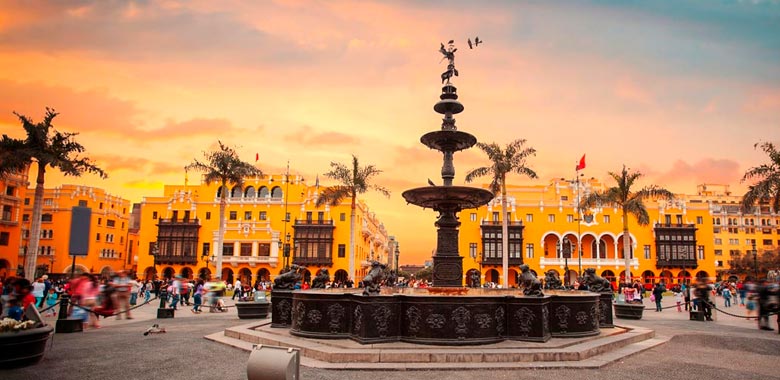The Main Tourist Attractions of Lima: A Gateway to Peruvian Culture
The Main Tourist Attractions of Lima, the capital of Peru, is a vibrant metropolis where history, culture, and gastronomy converge to create a unique destination for travelers. Known as the “City of Kings,” Lima offers a mix of colonial charm, modernity, and a rich cultural heritage.
Exploring the Larco Museum: A Journey Through Peru’s Ancient Civilizations
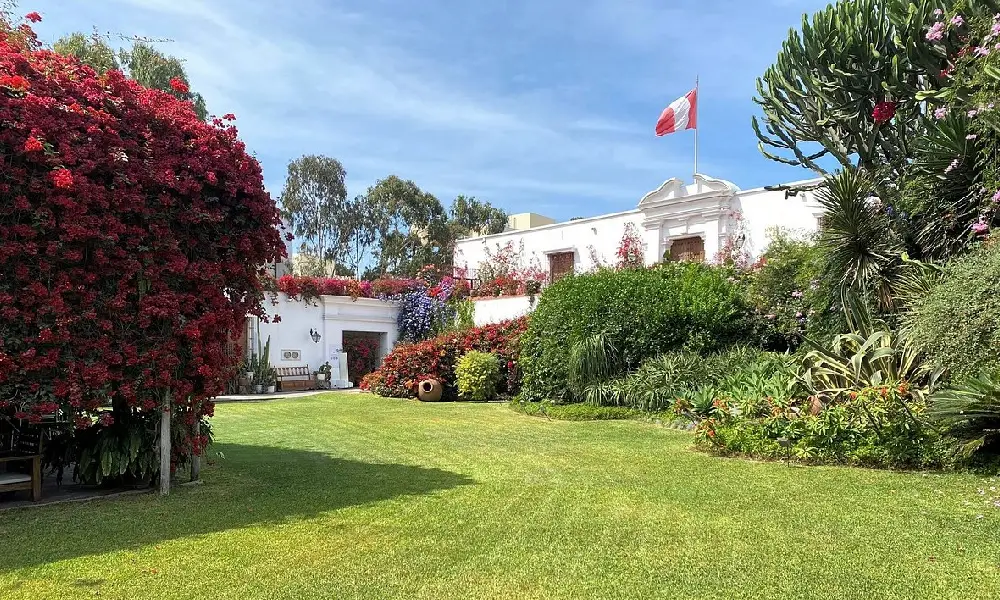
The Larco Museum The Main Tourist Attractions of Lima, in Lima is a cultural treasure trove that offers an unparalleled glimpse into the ancient history of Peru. Known for its extensive collection of pre-Columbian artifacts, the museum is a must-visit destination for history enthusiasts and anyone eager to understand Peru’s rich heritage. Located in a beautifully restored 18th-century mansion, the museum provides a captivating blend of art, archaeology, and storytelling.
A Glimpse Into Ancient Peru
The Larco Museum boasts over 45,000 artifacts spanning 5,000 years of Peruvian history. Its collection includes pottery, textiles, gold, and silver items, as well as ceremonial objects that showcase the ingenuity and artistry of Peru’s ancient civilizations, including the Moche, Nazca, Chimú, and Inca cultures.
Highlights of the Collection
- The Ceramic Collection
The museum is renowned for its impressive array of ceramics, particularly from the Moche culture. The pieces depict everything from daily life to mythology, showcasing the intricate artistry and storytelling of ancient Peruvians. - The Erotic Gallery
One of the museum’s most talked-about features is its Erotic Gallery, which displays a unique collection of ceramics that explore themes of sexuality, fertility, and life cycles in pre-Columbian cultures. This bold and fascinating exhibit offers insight into the openness of ancient societies regarding these aspects of life. - The Gold and Silver Room
The dazzling Gold and Silver Room houses an extraordinary collection of jewelry, crowns, masks, and ceremonial ornaments made from precious metals. These artifacts reflect the wealth, craftsmanship, and spiritual beliefs of Peru’s ancient civilizations. - Textiles and Weaving
Ancient Peruvians were master weavers, and the museum’s textile collection highlights the complexity and creativity of their techniques. Some of the displayed pieces are over 2,000 years old and remain remarkably well-preserved.
The Museum Experience
- Interactive Displays
The Larco Museum excels in presenting its artifacts with context. Interactive exhibits and detailed explanations help visitors understand the significance of each piece and the culture it represents. - The Visible Storage
One of the museum’s unique features is its visible storage, where thousands of artifacts are displayed in an organized manner. This allows visitors to appreciate the breadth and depth of the museum’s collection beyond the curated exhibits. - The Mansion and Gardens
The museum is housed in an 18th-century colonial mansion, adorned with bougainvillea-covered walls and surrounded by lush gardens. The setting itself is a serene and beautiful complement to the artifacts within. - Museum Café and Shop
After exploring, visitors can relax at the on-site café, which offers a menu of Peruvian dishes. The museum shop is also a great place to purchase unique souvenirs and high-quality reproductions of pre-Columbian art.
Tips for Visiting the Larco Museum
- Location: The museum is situated in the Pueblo Libre district of Lima, a short drive from the city center.
- Best Time to Visit: Early morning or late afternoon visits allow you to avoid crowds and enjoy a more intimate experience.
- Guided Tours: Opt for a guided tour to gain deeper insights into the artifacts and their cultural significance.
- Photography: Photography is allowed in most parts of the museum, so bring your camera to capture memorable moments.
Why Visit the Larco Museum?
The Larco Museum is more than just a collection of artifacts; it’s a gateway to understanding Peru’s ancient civilizations. Its expertly curated exhibits, immersive storytelling, and stunning location make it one of Lima’s top cultural attractions. Whether you’re a history buff, an art lover, or a curious traveler, a visit to this museum will leave you with a profound appreciation for Peru’s rich and diverse heritage.
Make sure to add the Larco Museum to your Lima itinerary for an unforgettable journey through time!
Discovering Miraflores: The Modern Heart of Lima
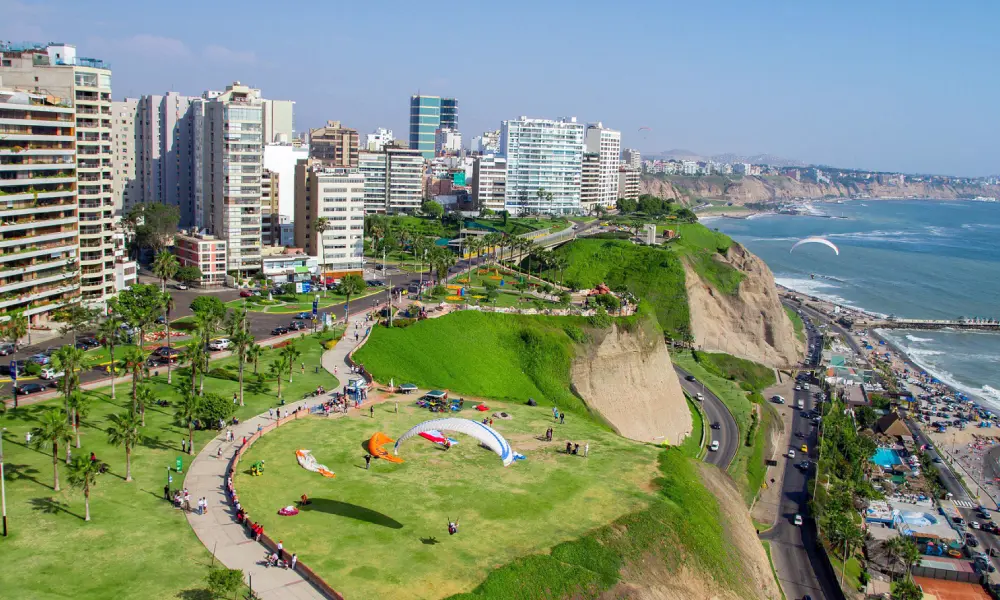
Nestled along the cliffs overlooking the Pacific Ocean and The Main Tourist Attractions of Lima, Miraflores is one of Lima’s most dynamic and vibrant districts. Known for its upscale vibe, stunning coastal views, and cultural attractions, Miraflores is a must-visit destination for travelers seeking a blend of history, modernity, and natural beauty.
The Malecón: A Scenic Coastal Promenade
The Malecón is a picturesque promenade stretching for miles along the cliffs of Miraflores. Lined with parks, sculptures, and panoramic views of the Pacific Ocean, it’s a haven for joggers, cyclists, and those simply enjoying the fresh sea breeze.
- Parque del Amor: One of the most iconic spots along the Malecón, this park features vibrant mosaic benches inspired by Barcelona’s Park Güell and the famous sculpture El Beso (The Kiss) by Victor Delfín.
- Paragliding: For thrill-seekers, the Malecón is a hotspot for paragliding. Soar over the cliffs and experience Miraflores from a breathtaking perspective.
Larcomar: Shopping and Dining with a View
Built into the cliffs, Larcomar is a unique shopping and entertainment complex offering breathtaking ocean views. With a mix of high-end boutiques, local stores, restaurants, and cafes, it’s the perfect spot for shopping, dining, or relaxing. Popular Peruvian dishes like ceviche and anticuchos can be enjoyed here while watching the sunset over the Pacific.
Huaca Pucllana: A Window to the Past
Amid the modernity of Miraflores lies a stunning archaeological site, Huaca Pucllana. This pre-Incan adobe pyramid, built by the Lima culture around 500 AD, serves as a fascinating contrast to the surrounding cityscape. Guided tours provide insight into the ancient rituals and lifestyles of the early inhabitants of the region. For a unique experience, dine at the on-site restaurant with a view of the illuminated ruins.
Kennedy Park: The Social Hub of Miraflores
Located in the heart of Miraflores, Kennedy Park is a lively gathering spot for locals and tourists alike. Known for its population of friendly stray cats, the park is surrounded by cafes, art exhibits, and street performers. It’s also a great place to shop for handicrafts or enjoy traditional Peruvian street food.
Surfing and Beaches
Miraflores is a prime destination for surfing enthusiasts. Beaches like Playa Makaha and Playa Waikiki attract surfers of all levels. Lessons and board rentals are readily available, making it an accessible activity even for beginners.
Cultural Experiences
Miraflores is more than just scenic views and shopping; it’s a cultural hub with something for everyone.
- Casa Museo Ricardo Palma: A museum dedicated to one of Peru’s most celebrated writers, offering a glimpse into the life and works of Ricardo Palma.
- Street Art and Galleries: The district is home to a growing art scene, with murals and galleries showcasing contemporary Peruvian artists.
Nightlife in Miraflores
When the sun sets, Miraflores comes alive with its vibrant nightlife. From cozy bars to lively clubs, there’s something for every mood. Popular spots include Calle de las Pizzas, a street lined with eateries and pubs, perfect for a casual evening out.
Tips for Visiting Miraflores
- Safety: Miraflores is one of the safest districts in Lima, but it’s always wise to stay alert, especially at night.
- Getting Around: The area is highly walkable, and taxis or rideshare services are readily available for longer distances.
- Best Time to Visit: The afternoons are ideal for enjoying the parks and the Malecón, while evenings are perfect for dining and nightlife.
Parque de la Reserva and the Magic Water Circuit: Lima’s Enchanting Nighttime Attraction
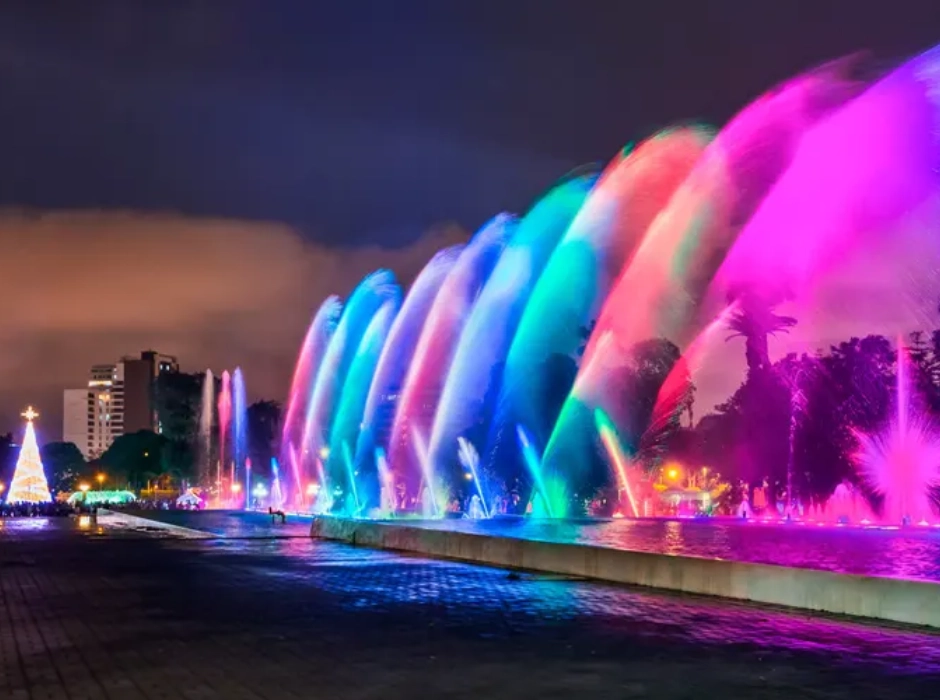
Located in the heart of Lima, the Parque de la Reserva is home to one of the city’s most beloved attractions and The Main Tourist Attractions of Lima: the Magic Water Circuit (Circuito Mágico del Agua). This sprawling park combines history, art, and entertainment, offering visitors an unforgettable experience through its stunning fountains and nightly light shows.
Parque de la Reserva: A Historical Landmark
Originally inaugurated in 1929, the Parque de la Reserva was built to honor the Peruvian reservists who defended the country during the War of the Pacific. The park features elegant sculptures, manicured gardens, and neoclassical architecture that reflect its historical significance. In 2007, it underwent a major transformation with the addition of the Magic Water Circuit, revitalizing it as a must-visit destination in Lima.
The Magic Water Circuit: A Dazzling Spectacle
The Magic Water Circuit holds the Guinness World Record for being the largest fountain complex in a public park. Its 13 illuminated fountains combine water, light, music, and technology to create mesmerizing displays that delight visitors of all ages.
Highlights of the Circuit
- Fuente de la Fantasía (Fantasy Fountain)
This large fountain is the centerpiece of the circuit and hosts the park’s main attraction: a spectacular light and music show. Laser projections and synchronized water jets bring Peruvian culture and history to life, accompanied by traditional and contemporary music. - Fuente Túnel de las Sorpresas (Tunnel of Surprises)
A favorite among visitors, this 35-meter-long water tunnel allows you to walk through an arch of cascading water, offering a fun and immersive experience. - Fuente Laberinto del Ensueño (Labyrinth of Dreams)
This interactive fountain challenges visitors to navigate a maze of water jets without getting wet—perfect for kids and adventurous adults. - Fuente Mágica (Magic Fountain)
A towering fountain with jets that reach up to 80 meters high, the Magic Fountain is a stunning visual display that stands out in Lima’s skyline. - Fuente de la Armonía (Fountain of Harmony)
With its elegant design and synchronized water movements, this fountain exemplifies the beauty and balance of the entire circuit.
A Family-Friendly Destination
The Magic Water Circuit is a hit with families. Children love the interactive fountains, while adults appreciate the artistic displays and cultural themes. The park’s safe, well-lit environment makes it an ideal evening outing for everyone.
Tips for Visiting Parque de la Reserva
- Timing: The park is open during the day, but the Magic Water Circuit is best enjoyed at night when the fountains are illuminated. Shows typically begin at dusk and run several times throughout the evening.
- Admission: The entrance fee is affordable, making it accessible to both locals and tourists.
- Clothing: Wear comfortable shoes and bring a light jacket, as evenings in Lima can be cool. If you plan to interact with the fountains, waterproof clothing is a plus!
- Photography: Bring your camera or smartphone to capture the vibrant displays, but be mindful of water splashes.
How to Get There
Parque de la Reserva is located in central Lima, near downtown and the Miraflores district. It is easily accessible by taxi, rideshare apps, or public transportation.
Gastronomic Experiences in Lima: A Culinary Paradise
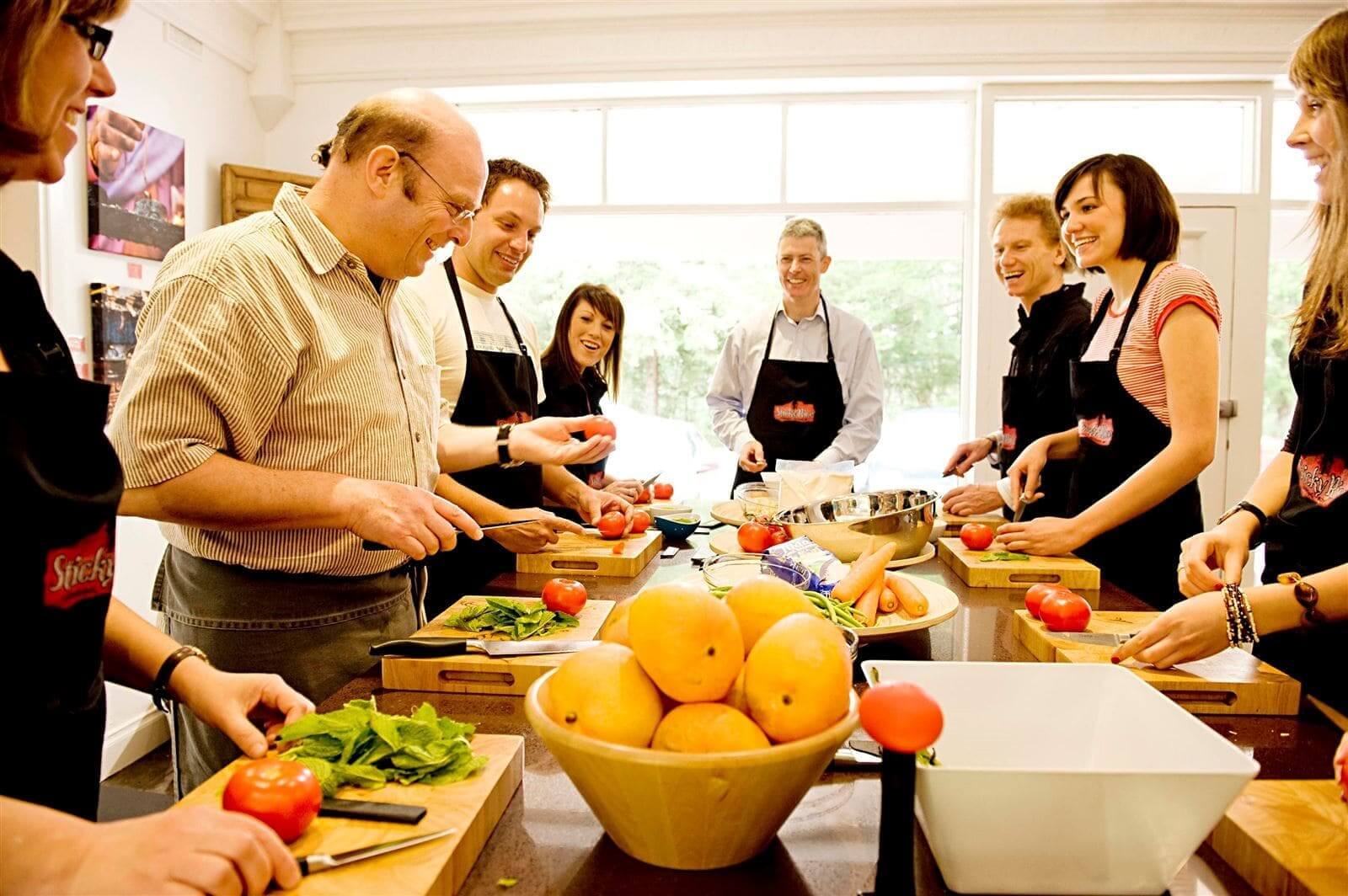
Lima, often referred to as the Culinary Capital of Latin America The Main Tourist Attractions of Lima, is a dream destination for food enthusiasts. With its fusion of indigenous traditions, Spanish influences, African heritage, and Asian flavors, the city offers a gastronomic landscape that is as diverse as its history. Whether you’re indulging in world-renowned fine dining or exploring vibrant street food, Lima’s food scene is an unforgettable experience.
Fine Dining: Michelin-Star Quality
Lima is home to several globally acclaimed restaurants that showcase Peruvian cuisine at its finest.
- Central: Ranked among the best restaurants in the world, Central by Virgilio Martínez takes diners on a journey through Peru’s ecosystems. Each dish represents a specific altitude, from the depths of the ocean to the heights of the Andes.
- Maido: Helmed by chef Mitsuharu Tsumura, Maido is celebrated for its innovative Nikkei cuisine, a fusion of Peruvian and Japanese flavors.
- Astrid y Gastón: A pioneer of Peru’s culinary revolution, this iconic restaurant blends traditional recipes with contemporary techniques.
Ceviche: The Iconic Dish
No visit to Lima is complete without savoring ceviche, Peru’s national dish. Made with fresh raw fish marinated in lime juice, chili, and onions, ceviche is a refreshing and zesty experience. Some of the best places to try it include:
- La Mar Cevichería: A popular spot offering a variety of ceviche options, from classic to innovative.
- El Mercado: Renowned for its fresh seafood and vibrant atmosphere.
Street Food Adventures
Lima’s street food scene is a treasure trove of flavors. From bustling markets to street carts, here are must-try items:
- Anticuchos: Grilled meat skewers, often made with beef heart, served with a side of potatoes and spicy sauce.
- Picarones: Sweet fritters made from squash and sweet potato, drizzled with a syrup called chancaca.
- Choripan: A sandwich made with grilled chorizo and chimichurri sauce, perfect for a quick bite.
Exploring Local Markets
For an authentic taste of Lima’s culinary culture, visit its bustling markets:
- Mercado de Surquillo: A hotspot for fresh produce, seafood, and traditional snacks.
- Mercado Central: Known for its variety of local ingredients and budget-friendly meals.
Pisco: Peru’s Signature Spirit
A gastronomic journey in Lima wouldn’t be complete without sampling Pisco, Peru’s iconic grape brandy.
- Pisco Sour: The classic cocktail made with Pisco, lime juice, simple syrup, egg white, and bitters.
- Chilcano: A refreshing mix of Pisco, ginger ale, and lime.
For a deeper understanding of this spirit, visit Museo del Pisco, where you can learn about its history and enjoy tastings.
Fusion Cuisine: A Culinary Crossroads
Lima’s food scene thrives on fusion, blending global influences with local ingredients:
- Chifa Cuisine: A unique blend of Peruvian and Chinese culinary traditions. Try chaufa (fried rice) and tallarín saltado (stir-fried noodles).
- Nikkei Cuisine: The Japanese-Peruvian fusion that has captured international acclaim, with dishes like tiradito and sushi rolls with a Peruvian twist.
Cooking Classes: Hands-On Experiences
For those who want to take a piece of Lima’s culinary magic home, consider joining a cooking class. Many tours include visits to local markets, where you’ll learn to prepare iconic dishes like lomo saltado, aji de gallina, and ceviche.
Tips for Enjoying Lima’s Gastronomic Scene
- Reservations: For fine dining restaurants, book weeks in advance, as they are often fully booked.
- Dietary Preferences: Many restaurants accommodate vegetarians and special diets; just inform them in advance.
- Local Insights: Engage with locals or guides for recommendations on hidden gems and off-the-beaten-path eateries.
Exploring Pachacamac: The Sacred City of the Andes
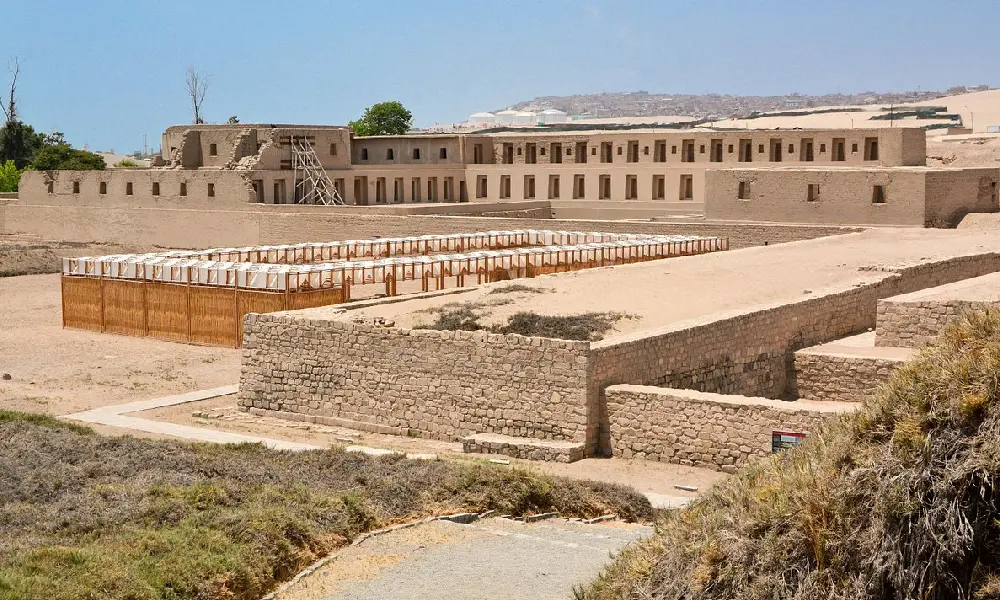
Just 40 kilometers southeast of Lima lies Pachacamac, an ancient archaeological site that offers a fascinating glimpse into the spiritual and cultural heart of pre-Columbian Peru. Named after the god Pachacamac, the “Earth Maker,” this sacred city was a major pilgrimage center for the coastal civilizations that thrived in the region for over a millennium.
A Journey Through Time
The site of Pachacamac has been continuously occupied by various cultures, including the Lima, Wari, and Ichma, before being absorbed into the Inca Empire. Each civilization left its mark, creating a sprawling complex of temples, plazas, and adobe structures that blend architectural styles.
- Lima Culture (200-600 AD): The earliest structures, including the Painted Temple, date back to this period and are characterized by their intricate murals.
- Wari Culture (600-800 AD): The Wari expanded Pachacamac’s influence, adding new administrative and ceremonial structures.
- Ichma Culture (800-1450 AD): The Ichma were responsible for much of the site’s development, including the iconic Temple of the Sun.
- Inca Empire (1450-1533 AD): The Incas revered Pachacamac as a major religious hub, integrating it into their vast network of sacred sites.
Key Attractions at Pachacamac
- Temple of the Sun
This imposing structure, built by the Ichma and later used by the Incas, is perched on a hill overlooking the Pacific Ocean. Dedicated to the sun god, it served as a site for rituals and offerings. Its strategic location provides panoramic views of the surrounding area. - Temple of Pachacamac
One of the oldest structures, this temple was dedicated to the god Pachacamac, who was believed to control earthquakes and provide fertility. Pilgrims from across the region traveled here to seek divine guidance and blessings. - Acllahuasi (House of the Chosen Women)
This residential complex housed women selected to serve the gods. They played a vital role in religious ceremonies and the preparation of offerings. - Painted Temple
The remnants of colorful murals adorn this temple, showcasing geometric patterns and marine motifs that reflect the artistic traditions of the Lima culture. - Site Museum
Before exploring the ruins, visitors can stop at the Pachacamac Museum, which houses artifacts recovered from the site. The collection includes pottery, textiles, and religious idols, offering valuable context for the ruins.
Cultural and Religious Significance
Pachacamac was more than a political and administrative center—it was a sacred pilgrimage site revered for its oracles. The priests of Pachacamac were believed to communicate directly with the deity, offering predictions and advice to those who sought them. This spiritual importance persisted even after the Inca conquest, as the Incas respected and incorporated Pachacamac into their own religious framework.
Modern-Day Exploration
Today, Pachacamac is one of the most important archaeological sites in Peru. Visitors can wander through the expansive complex and imagine the vibrant cultural and spiritual life that once thrived here.
- Guided Tours: Available to help visitors understand the site’s history and significance.
- Natural Surroundings: The site is surrounded by desert landscapes, adding to its mystical atmosphere.
Tips for Visiting Pachacamac
- Getting There: Pachacamac is an easy day trip from Lima. Public transportation, taxis, and organized tours are available.
- Timing: Visit early in the day to avoid the heat, as the site is exposed and can get very sunny.
- Wear Comfortable Shoes: The site covers a vast area with uneven terrain.
- Bring Water and Sunscreen: Essential for staying hydrated and protected during your visit.
The Main Tourist Attractions of Lima, Lima is a city of contrasts, where ancient history and contemporary culture coexist. Its rich tapestry of attractions ensures there’s something for every type of traveler. Whether you’re exploring its historic sites, strolling along its coastal promenades, or savoring its culinary masterpieces, Lima is a destination that will captivate your heart and senses.
Plan your visit and discover why Lima is the perfect gateway to the wonders of Peru!
For more information and to book your trip, contact us on WhatsApp. Follow us on Instagram for the latest updates and travel inspiration.
CONTACT US:
We are a Travel Agency specialized in tourist packages, if you need any information, do not hesitate to write to us.
We offer tours in Peru and Bolivia.





